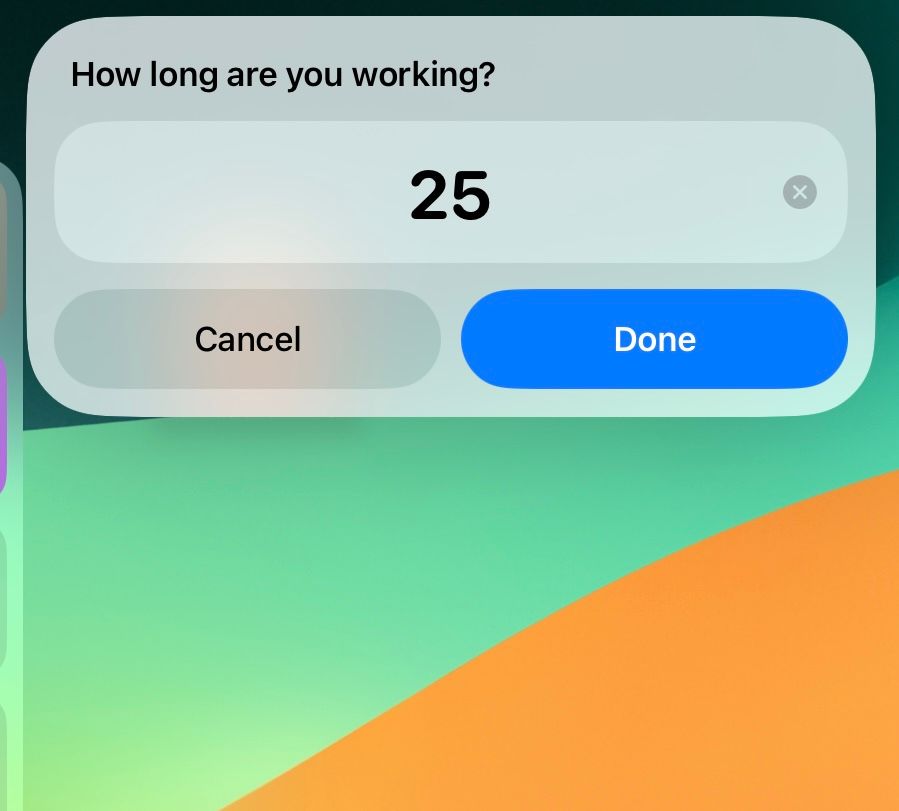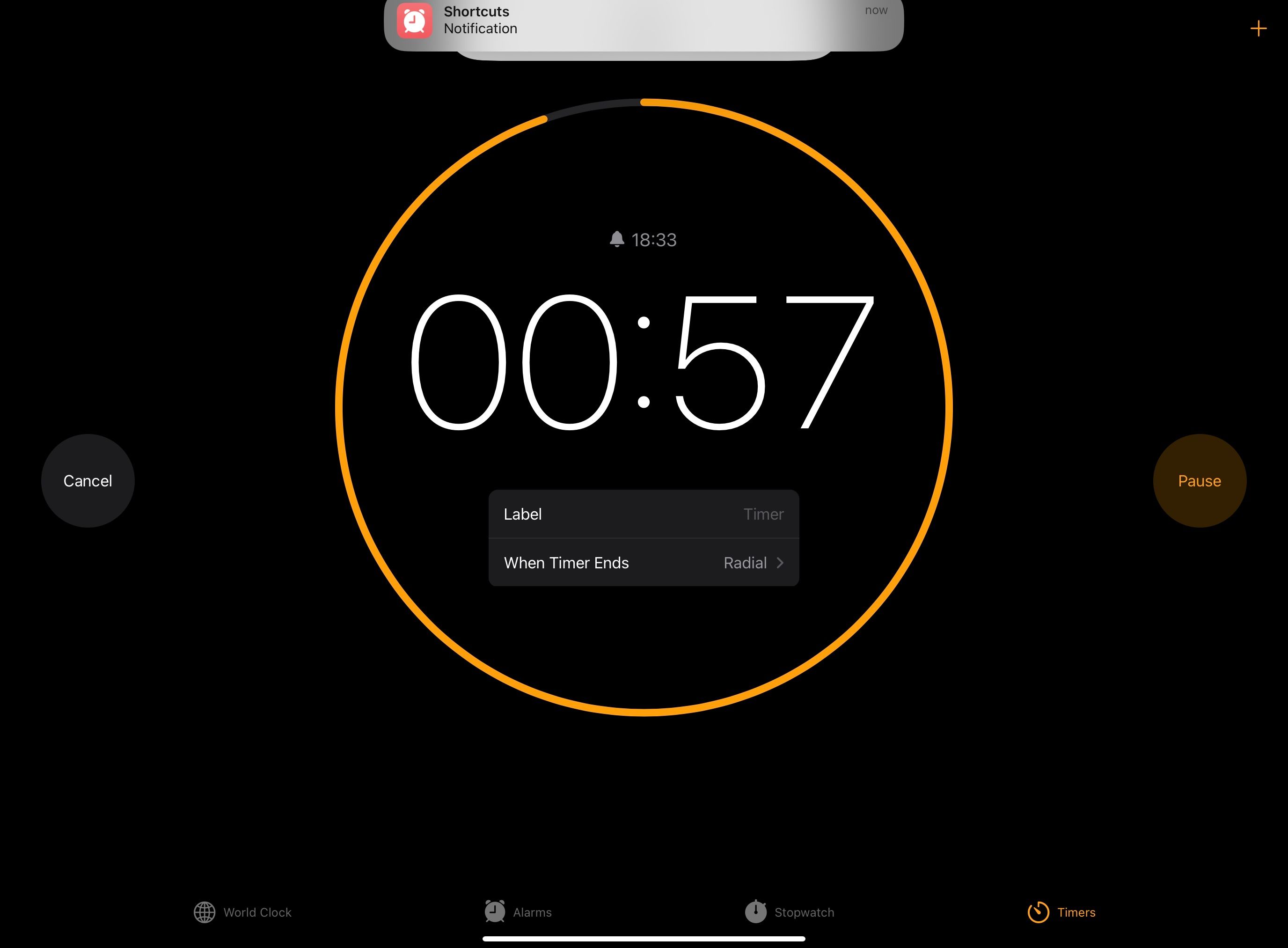🍎⏱️💡 ヽ(•̀ω•́ )ゝ
Free pomodoro timer shortcut built only with the genuine Apple Clock app
Intro
In modern society where productivity and time management are of top priority, there are a constellation of products and service coming and going day and night. They all serve the purpose of accelerating people's lives, especially those who've turned into prisoners of time.
The Pomodoro® Technique plays a pivotal role as the accelerator and there've been a street full of pomodoro timer apps available in the app stores.
I, a prisoner of time like most people, went to the market and stuck around for a while.
Having tried those tomatoes from A to Z that looked delicious, I couldn't still find anything that made me say "This is it!"
Some have very limited features for free tier users, whereas some have a lot of bells and whistles that I mightn't use.
So I embarked on creating it on my own with the Apple shortcut. As it's a rush job, I can't guarantee you its quality.
Reader personas
- Want to use a useful pomodoro timer for free
- Interested in creating a pomodoro timer with the Apple shortcut without any help of third-party apps
My proficiency level
As of the day when I'm writing this article, my proficiency level in this field is as follows:
- Have a three-year experience as a software engineer in total (Not in a row)
- Have a one-week experience in creating Apple shortcuts
- Have created five or so shortcuts
Main
You can download the final product via the link below.
The design concept
- Use genuine Apple apps only in combination with the shortcut
- Keep features to an absolute minimum
- Make it customizable by users by themselves
How to use

To start the pomodoro timer, all you have to do are:
- Tap or click the shortcut icon to run it(Put it on your home screen or somewhere in advance)
- Set your working interval(25mins by default)
- Set your breaking interval(5mins by default)
You'll see the timer counting down appear. Now, let's get started!

The workflow
Behind the scenes, the pomodoro shortcut proceeds as follows: (You can skip this section if you're not interested in the mechanism)
Does the shortcut receives a parameter?
↪️Yes
- Retrieve the work & break time from the param by splitting it
↪️No
- Ask you how long you're working(in minutes)
- Ask you how long you're taking a break(in minutes)
Hereafter, it runs on the same process
- 𝕏 Set the work & break intervals to variables
- ✋Wait for a few seconds
- ⏰Open the timer tab of the Apple Clock app
- 📢Show a notification that lets you know the work interval's started
- 🔄multiply the work & break intervals by 60 to get them in seconds
- 𝕏 Set the work interval in seconds to a variable
- ✋Wait for the work intervals in seconds
- ⚠️Show an alert to check if you want to continue
- If canceled, it gets out of the process here
- ⏰Open the timer tab of the Apple Clock app
- 📢Show a notification that lets you know the break interval's started
- 𝕏 Set the break interval in seconds to a variable
- ✋Wait for the break intervals in seconds
- ⚠️Show an alert to check if you want to continue
- If canceled, it gets out of the process here
- 🔄Concatenate the work & break intervals in minutes as a string
- 𝕏 Set the concatenated string to a variable
- 🔛Pass it to this shortcut and call it in itself
This shortcut can take a parameter in text and then retrieves the interval times separately from it if it exists, which makes it recursive.
If not, it asks you how long, which is supposed to be the case only the first time.
Another important point is that the Apple shortcut doesn't have a feature like the async/await from JavaScript. 1
That's why I had to use the "Wait xxx" block instead of the await operator to make it align with the timer in terms of the timing. I know it's a bit of a workaround.
Cautions
When you use this shortcut, make sure the following limitations:
- It's not fully synchronized with the Apple Clock app
- Any actions beyond the scope of the workflow could cause a misalignment of them
- e.g., Close the alert popup by tapping or clicking other areas on your screen than button menus
- This stops the shortcut but not the Clock app
- e.g., Tweak the timer directly in the Clock app
- This affects the Clock app but not the shortcut
- e.g., Close the alert popup by tapping or clicking other areas on your screen than button menus
- Any actions beyond the scope of the workflow could cause a misalignment of them
Outro
After installing the shortcut, You can customize the default work & break intervals and other behaviors as you like.
Incidentally, I use it like these:
- It's callable by tapping the icon on the home screen of iPhone & iPad
- It's automatically called when the study mode is turned on.
- triggered by the Automation functionality of the Apple shortcut
-
To the best of my knowledge, there's no such feature as asynchronous as of Oct 2024. ↩
Thanks👏